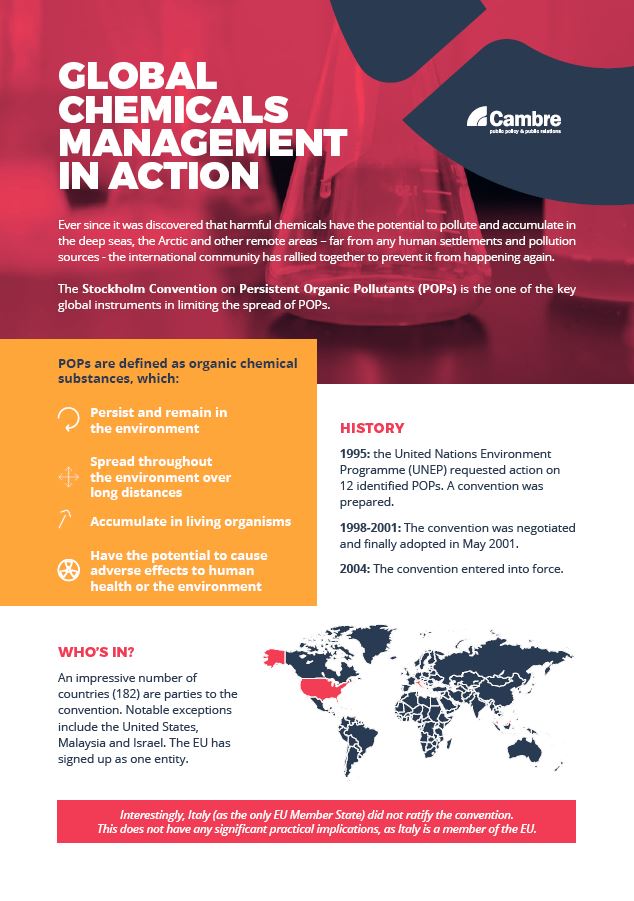Since its adoption in 2001, the Stockholm Convention has served as the main instrument in the regulation of so-called persistent organic pollutants (POPs) at the global level. But how does it work in practice?
182 countries signed up to the convention, and discussions take place in the rotating committee of experts known as the POPRC (pronounced “POP rock”) every autumn.
We developed an infographic to show what the Stockholm Convention covers, and how it works in practice. Who signed up to it, which chemicals are listed, which countries like to nominate substances, and how does the listing process work? Find answers to all these questions and more by clicking on the image below:
